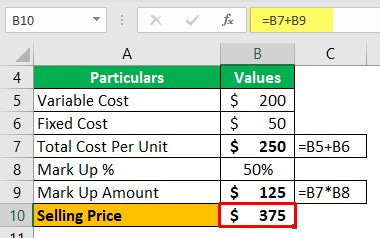1. Cost-based pricing
1. Cost-based pricing
I come from a Baniya family. The rules of traditional businesses are simple - Lagat (total cost) + Labh (profit).

To understand cost-based pricing, let’s understand a few boring micro-economics concepts first!
Variable costs are the costs that changes with how little or more you produce. e.g:- wages. If you produce less, you would need fewer workers and in turn spend less on wages.
Fixed costs are the costs that don’t vary with how much or little you produce. Think of the offfice space you have leased for a year.
Mark up is the fancy name for profit.
Cost-based pricing is simple. Suppose you have created a cohort-based course on React.js with the production cost of each unit (course) being ₹ 250. You want a 50% profit over it. You sell it for ₹ 375. That’s it. That is cost-based pricing.
The cost to produce your React.js course is always too little. It makes absolutely no sense to price it by cost + markup approach.
Also as a tech company, after a certain scale, your cost of producing additional units almost approaches zero.
Hence, cost-based pricing suits traditional (non-tech) businesses more.
1.1 Cost-based pricing as a competitive advantage
Recently, I stumbled upon an e-apparel website - Everlane. It was a usual apparel website unless the tagline caught my attention - Ethical factories. Radical transparency.
Scrolling down, their pricing section blew my mind! They mentioned their total cost from manufacturing to end mile delivery and added a 211% profit (markup) on the production cost.
Much honesty? Right! They were also kind enough to mention that their competitors are booking 400% profit. See we are booking less profit!
Everlane is a very interesting example of how pricing strategy can be a pure-play innovation and is an art in the true sense.

1.2 Should you cover up your costs?
Covering up the costs makes absolute sense when you are bootstrapping or have no access to external capital. You need to cover up the expenses of running your business. You need to issue a paycheck every month.
Covering up costs is not a choice but a quest of survival.
The story is altogether different if you chasing growth (trying to grab a large pie of the market (fast! faster!) with piles of cash in the bank.
Let’s see the next pricing strategy - value-based pricing.